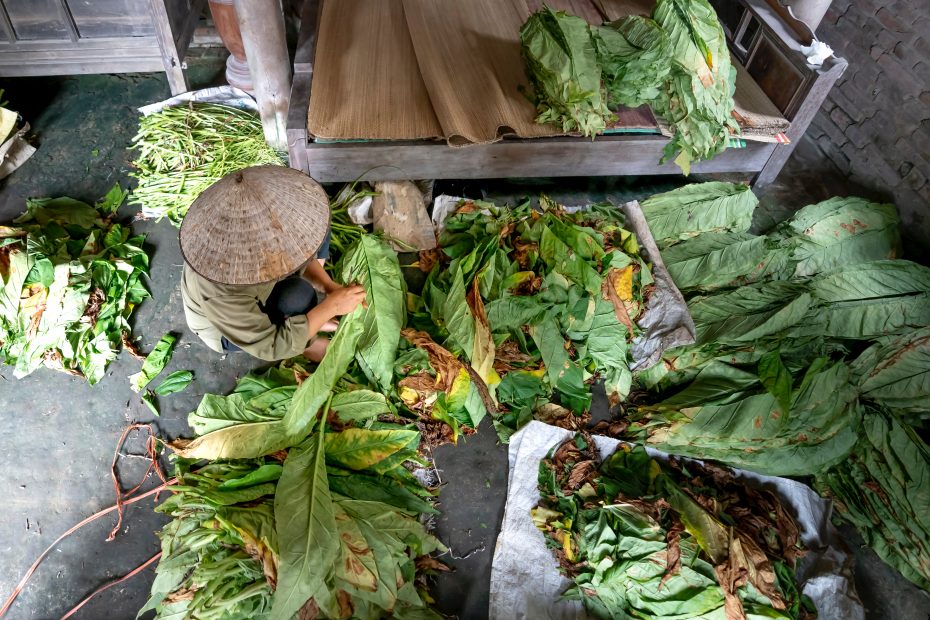Is Tea Popular In Vietnam?
Vietnam is in an ideal geographical location for tea production, in the middle of what we might consider the cradle of tea and with a climate favorable to tea cultivation in both the north and south of the country. Despite this, the Vietnamese tea industry is quite young, albeit with rapid growth in recent years.
History of Vietnamese tea
For much of its history, Vietnam saw very limited tea consumption, almost entirely the preserve of the nobility who followed the customs of the Chinese nobility.
The development of the tea industry was stimulated by French colonizers, who in the late 19th century saw the cultivation of Camellia sinensis as an economic opportunity, as well as a possible easy supply of tea for its North African colonies.
The Vietnamese tea industry halted its growth and came close to disappearing after World War II, when a decade-long conflict shook the country and led to the creation of a closed economy with little reliance on exports. It was not until the late 1980s that Vietnam saw its tea industry grow again, rising to a permanent position among the world’s top 10 producing and largest exporting countries.
A fledgling quality tea market
Like other nations that produce tea, Vietnam’s government and trade organizations prioritize sales volume, promoting crops that promise high output. However, a market for high-quality Vietnamese tea is slowly emerging. This is still a niche market, but one that demonstrates increased curiosity on the part of producers and consumers for different and more distinctive qualities of tea.
At present, the areas to watch are: traditional Tan Cuong green tea, oolong tea, and the variety produced from wild tea plants.
Tan Cuong
Vietnam’s best-known tea is undoubtedly Tan Cuong green tea, grown in Thai Nguyen province in the northeast of the country. It is one of only two is to have received Protected Geographical Indication (PGI) recognition from local authorities.
On small, primarily family-owned farms, the Trung Du cultivar is usually used to make tea. In recent years, efforts are being made to gradually replace the original cultivar with a higher-yielding one. The challenge, of course, lies in being able to increase production without altering the tea’s organoleptic characteristics.
Tan Cuong has an herbaceous aroma, with a slightly bitter taste and floral aftertaste. For those who enjoy Chinese and Japanese green teas, it is a very suitable tea. Unfortunately, at present the certification of the geographical indication is not very strict, and cases of false labeling of tea with characteristics very different from the original one are not uncommon.
Oolong Tea
The boom in Vietnamese oolong tea production occurred in the 1990s, driven mainly by Taiwanese companies that brought to the country know-how, technologies and cultivars already widely used on Formosa Island. Even today, with few exceptions, Vietnamese oolong is almost completely exported to Taiwan, where local manufacturing companies package and distribute it. There has been no shortage of controversy in the past over incorrect labeling by Taiwanese producers, who do not always correctly indicate the presence of Vietnamese tea, thus fraudulently selling it as Taiwanese oolong tea.
The country’s northwest and northeastern provinces of Son La and Lang Son, as well as Lam Dong province in the central highlands, are where the majority of the nation’s oolong tea is produced.
Wild Teas
Vietnam is one of the few countries in the world that is home to vast expanses of wild or re-grown tea plants. Tea produced from these plants is marketed as shan tuyet , which can be literally translated as “mountain of snow” because of the silvery down on the young leaves of the shrubs.
The northeast and northwest of the nation are home to the majority of the nation’s wild trees. Despite serious infrastructural deficiencies in these areas, interest in wild teas has been growing rapidly in recent years, with key input from Chinese traders who seem to particularly appreciate them. Some of the production is likely to be used, even fraudulently, for the production of Chinese Pu’er.
